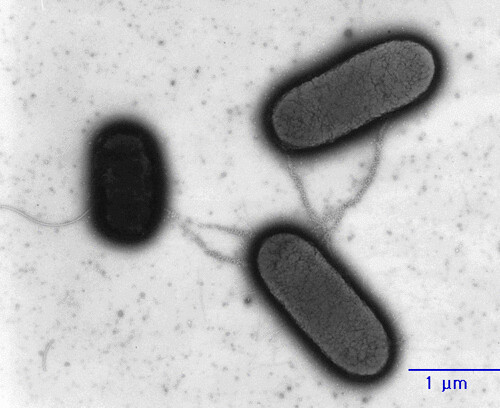...so no blogging. Instead, I'll leave you with a "make sexy time" photo (to steal Borat's phrase):

It's E. coli having sex. Well, actually it's conjugation. Many bacteria have plasmids which are 'mini-chromosomes' (antibiotic resistance genes are often found on plasmids). The bacteria are able to build protein tubes ("pili") and send copies of plasmids to another cell.
More like this
Astute ERV readers have noticed a couple of odd things about my research.
1- How the hell am I cutting and pasting bits of a retroviral (RNA) genome together?
2- How the hell do I have a (seemingly) endless supply of HIV-1 for my experiments?
Over at The Tree of Life, Jonathan Eisen asks:
What do people think are the potential benefits that could come from finishing?

Happy birthday!
Dude: You just blogged that you're not blogging. Now I have cognitive dissonance. Or perhaps you do.
But happy birthday!
Happy Birthday!
Happy Birthday from South Africa :)
Happy birthday.
Happy Birthday
Cheers Dr Mike, Happy B-day
Happy (belated) birthday!!!
Get yourself an E. coli giant plush microbe. My 8 month old girl got Ebola for Christmas. :)
Hey, Mike, Happy Birthday!
Mike
Aw yeah. You better transfer those plasmids for genetic recombination.
biber hapı